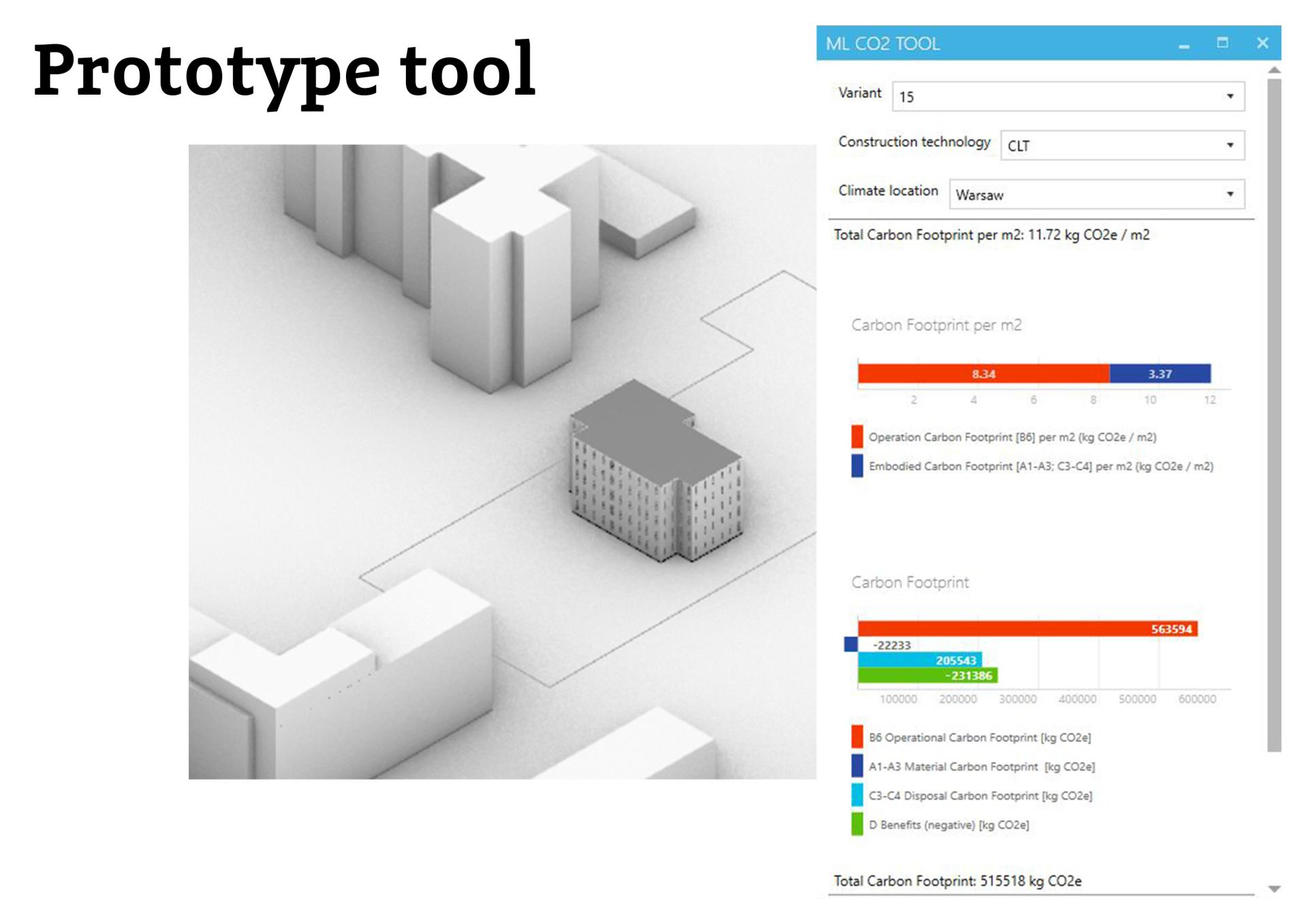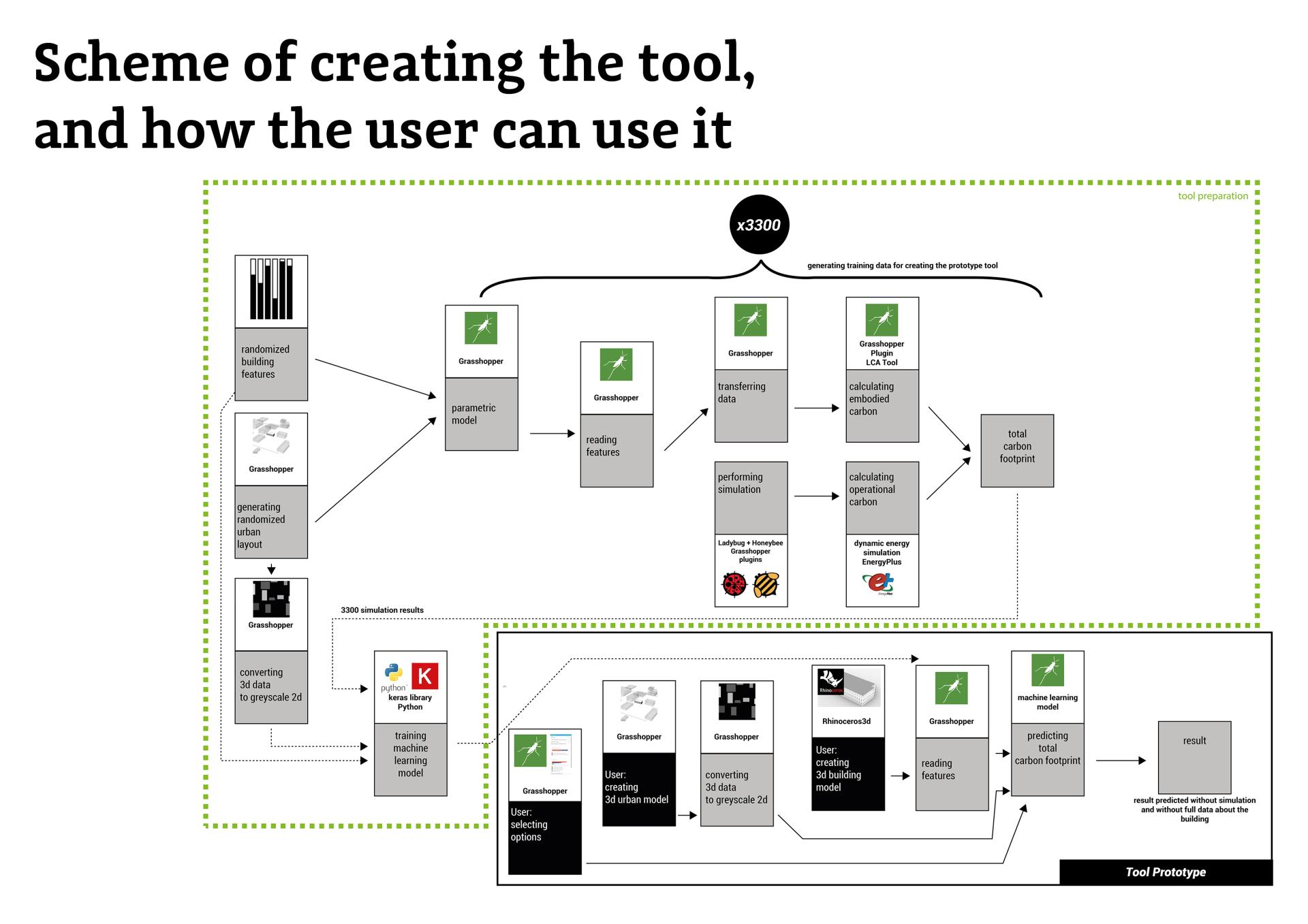AI for zero carbon buildings
Basic information
Project Title
Full project title
Category
Project Description
Artificial Intelligence (AI) can be used to lower carbon footprint of buildings, by optimizing form, and helping decision making during design process. Machine learning can be used to select optimal solutions resulting in zero or negative carbon footprint in the lifecycle of the building. AI can also improve circular strategies that aim at increasing reducing, reusing and recycling of building components.
Geographical Scope
Project Region
Urban or rural issues
Physical or other transformations
EU Programme or fund
Which funds
Description of the project
Summary
Artificial Intelligence (AI) can be used to lower carbon footprint of buildings, by optimizing form, and helping decision making during design process. Machine learning can be used to select optimal solutions resulting in zero or negative carbon footprint in the lifecycle of the building. AI can also improve circular strategies that aim at increasing reducing, reusing and recycling of building components.
The author has already conducted a set of experiments using machine learning and neural networks, creating a prototype tool for archtiects and engineers to help them lower carbon footprint of their projects. The results have been published in scientific journals. The prototype tool works with very high efficiency but only on a specific type of buildings and specific size. The author needs to conduct much more work to develop the tool further.
The basic approach is:
1. Creating a set of training data by running energy simulation on different building forms, different material compositions, different locations etc.
2. Calculating the total carbon footprint over the lifecycle of the building, by adding embodied carbon and operational carbon from step 1.
3. Using this training set to train a neural network model to predict the carbon footprint of a building without actual timeconsuming LCA study being performed
4. Using the trained model in the prototype tool that can isntantly predict the carbon footprint of a building being drawn by an architect or an engineer during design process
5. Improve the design using suggestions from the tool: change material composition, change the form of the buildings, imrpove circular strategies, find components that can be reused, recycled.
The tool helps the designer to make conscious decisions that improve lifecycle thinking, lower carbon footprint and increase the circularity of their projects
Key objectives for sustainability
The built environment is a significant contributor to the problem of greenhouse gas emissions. The Architecture, Engineering, and Construction (AEC) industry is believed to be responsible for up to 40% of global greenhouse gas (GHG) emissions. The main focus of the tool is reducing carbon footprint of buildings designed by architects and engineers. By utilizing artificial intelligence the tool can predict the total carbon footprint of a proposed building, and the suggest the designer the possible changes.
The use of various types of assessment and simulation tools is a common approach to ecological design in the architectural design process. Although life cycle analysis (LCA) is a widespread methodology, it is frequently overlooked until later in the design process. As a result, such technologies frequently fail to assist designers during the design process, instead being used solely to review the completed product. At the same time, a number of early design decisions can significantly minimize the building's carbon footprint. The ability to change the design early in the process is usually fairly high, but it reduces as the process progresses.
The author believes it is important to help designer to introduce carbon footprint and circularity analysis early into the design process.
Key objectives for aesthetics and quality
Architects and engineers have today a lot of requirements to fulfill. Carbon footprint and circularity assessment is just another set of obligations to fulfill. The prototype tool proposed by the author helps them to easily assess their design in terms of sustainability by showing how to reduce carbon footprint and introduce circular strategies. This means that the designers have more time to spend on aesthetics and functionality. By using the machines to do the tedious work, we can get back some time for designers to spend on more creative side of their projects.
Key objectives for inclusion
The main problem in sustainable architecture is the high level of expertise needed for architects and engineers to design low carbon buildings. The lifecycle approach - where architects are trying to reduce carbon footprint at all lifecycle stages requires a lot of data. Also it is important to note that without a holistic approach some decisions made by designers can be wrong. For example: while increasing amount of wall insulation lowers the energy needed for heating of the building (operational carbon footprint), at the same time it increases amount of used material, which in turn can lead to higher embodied carbon. What is the optimal level of wall insulation? There is no simple answer, and in every building, location and specific urban conditions - the answer might be different. Proposed prototype tool helps the designers to make proper decisions regarding carbon footprint and circularity - and in turn give equal opportunities to all designers, not only specialists.
On the other hand in expensive investments often there is a budget for a sustainability specialist, but in small projects - typically clients do not have enough money to pay for additional work regarding sustainability, and lwoering carbon footprint. An accessible tool can also widen the scope of projects where designers could actually lower the carbon footprint.
Physical or other transformations
Innovative character
The prototype tool incorporates the environmental sustainability in it's main goal - prediciting carbon footprint, guiding decision making process and helping forming circularity strategies. At the same time the designers have more time to spend on aesthetics and functionality. By using the machines to do the tedious work, we can get back some time for designers to spend on more creative side of their projects. On the other hand there often is a problem problem in sustainable design - that the level of expertise needed for architects and engineers to design low carbon buildings is high. Proposed prototype tool helps the designers to make proper decisions regarding carbon footprint and circularity - and in turn give equal opportunities to all designers, not only specialists. On the other hand in expensive investments often there is a budget for a sustainability specialist, but in small projects - typically clients do not have enough money to pay for additional work regarding sustainability, and lwoering carbon footprint. An accessible tool can also widen the scope of projects where designers could actually lower the carbon footprint.


